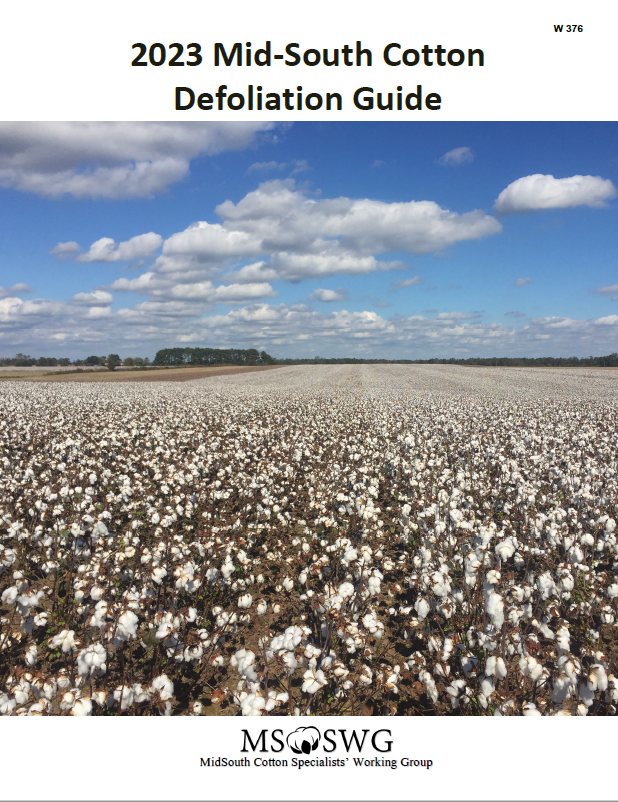 I am happy to report the agenda for the 2024 Cotton Focus has been set and we have a very informative lineup. We will start the morning out with a Cotton Specialist Roundtable with Dr. Brian Pieralisi (MS), Mr. Tyler Sandlin (AL), and Dr. Bradley Wilson (MO) discussing their season observations, tips for 2024, and things they will be watching over the coming year. Next, we will have Dr. Thomas Ducey with USDA from Florence, SC discussing the emerging field of Biologicals- you will not want to miss his section! Our late morning section will include the always valuable updates from Dr. Lori Duncan, Dr. Aaron Smith, Dr. Sebe Brown, Dr. Larry Steckel, Dr. Nutifafa Adotey and Dr. Heather Kelly. Finally, we will close out the meeting with a catered lunch from Tulum. Pesticide and CCA points will be available. Looking forward to seeing each of you there!
I am happy to report the agenda for the 2024 Cotton Focus has been set and we have a very informative lineup. We will start the morning out with a Cotton Specialist Roundtable with Dr. Brian Pieralisi (MS), Mr. Tyler Sandlin (AL), and Dr. Bradley Wilson (MO) discussing their season observations, tips for 2024, and things they will be watching over the coming year. Next, we will have Dr. Thomas Ducey with USDA from Florence, SC discussing the emerging field of Biologicals- you will not want to miss his section! Our late morning section will include the always valuable updates from Dr. Lori Duncan, Dr. Aaron Smith, Dr. Sebe Brown, Dr. Larry Steckel, Dr. Nutifafa Adotey and Dr. Heather Kelly. Finally, we will close out the meeting with a catered lunch from Tulum. Pesticide and CCA points will be available. Looking forward to seeing each of you there!


 Many in West Tennessee have begun defoliating and questions on timing have been pouring in. In this blog, I rehash results from an old survey on boll maturity, give a few additional pointers on timing defoliation, and share a few thoughts on concoctions as we move towards the end of September.
Many in West Tennessee have begun defoliating and questions on timing have been pouring in. In this blog, I rehash results from an old survey on boll maturity, give a few additional pointers on timing defoliation, and share a few thoughts on concoctions as we move towards the end of September. 

 I’ve had several questions over the past two weeks about how many heat units we have accumulated and how this compares to our average year. As of August 28th, we have accumulated 1,974 DD60s since May 1. We’ve broken from the 30 year average trend line several times throughout the year; May was considerably warmer, June pulled us back to the average trend line, and although we have been rolling above and below the line from the end of July through August, as of August 28th, we are within 15 heat units of the 30 year trend line; on average, by August 28th, we accumulate 1,961 DD60s. As you look at the above graph, you may notice these breaks with the trend line are ever-so-slight. Keep in mind rate of change is important. If you zoom in on several of the regions highlighted above, you can see how our weather this year breaks from the trend line before rejoining it throughout the season.
I’ve had several questions over the past two weeks about how many heat units we have accumulated and how this compares to our average year. As of August 28th, we have accumulated 1,974 DD60s since May 1. We’ve broken from the 30 year average trend line several times throughout the year; May was considerably warmer, June pulled us back to the average trend line, and although we have been rolling above and below the line from the end of July through August, as of August 28th, we are within 15 heat units of the 30 year trend line; on average, by August 28th, we accumulate 1,961 DD60s. As you look at the above graph, you may notice these breaks with the trend line are ever-so-slight. Keep in mind rate of change is important. If you zoom in on several of the regions highlighted above, you can see how our weather this year breaks from the trend line before rejoining it throughout the season.